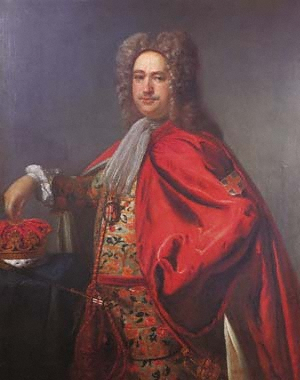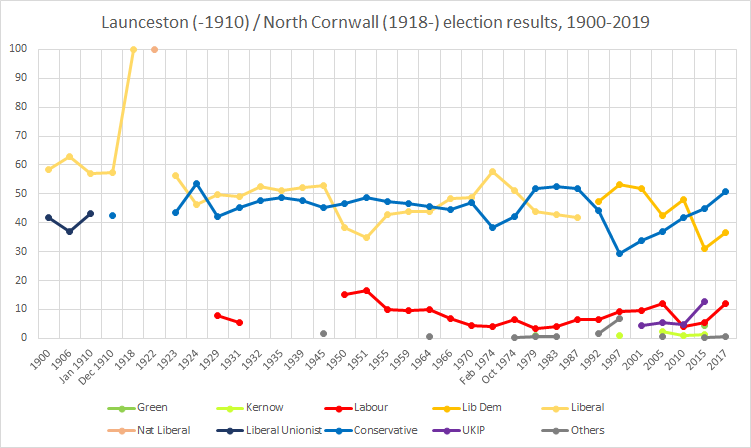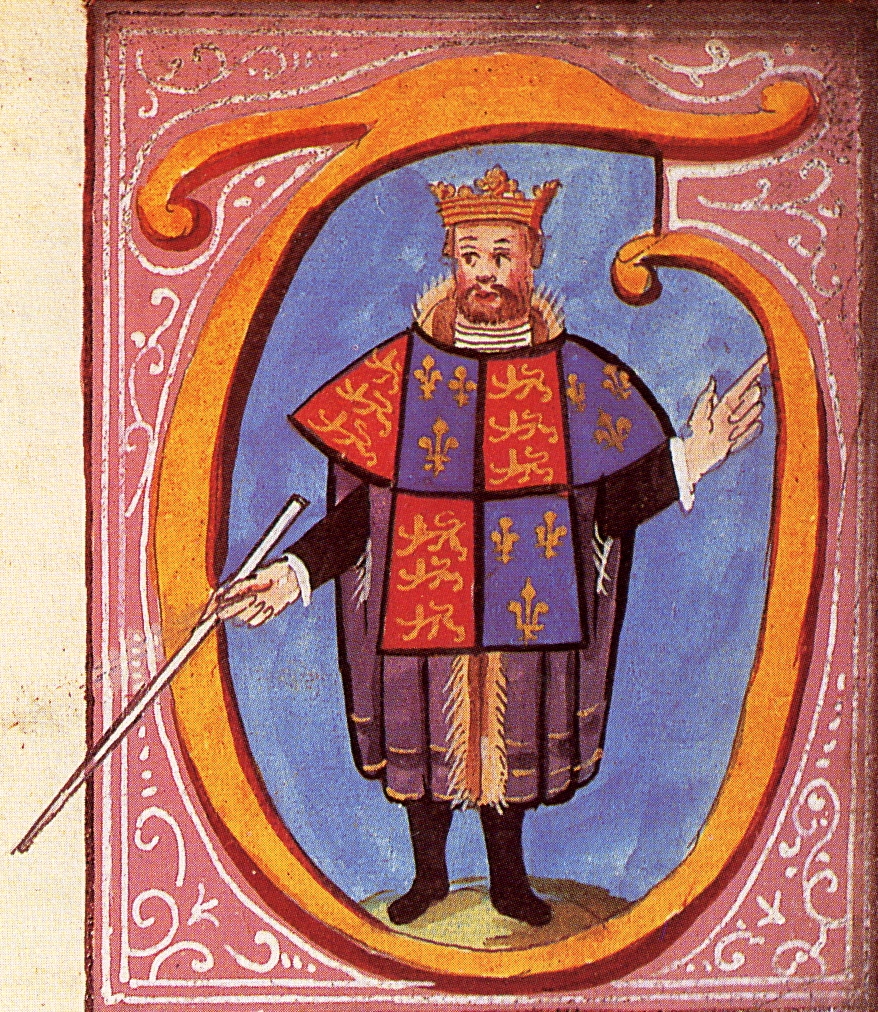|
John Anstis
John Anstis (29 August 1669 – 4 March 1744) was an English officer of arms, antiquarian and politician who sat in the House of Commons between 1702 and 1722. He rose to the highest heraldic office in England and became Garter King of Arms in 1718 after years of political manoeuvring. Early life Anstis was born at St Neot, Cornwall on 29 August 1669. He was the first son of another John Anstis and his wife Mary, the daughter of George Smith. Anstis matriculated at Exeter College, Oxford, on 27 March 1685 and entered the Middle Temple on 31 January 1690. On 23 June 1695 he married Elizabeth, daughter and heir of Richard Cudlipp of Tavistock, Devon. They had eight sons and six daughters. Anstis was called to the bar on 19 May 1699. Political life In March 1701, Anstis received permission from the Earl Marshal, Henry Howard, 7th Duke of Norfolk, to collect materials from the College of Arms library to assist in the defence of the jurisdiction of the Earl Marshal, which was ... [...More Info...] [...Related Items...] OR: [Wikipedia] [Google] [Baidu] |
John Anstis Garter
John is a common English name and surname: * John (given name) * John (surname) John may also refer to: New Testament Works * Gospel of John, a title often shortened to John * First Epistle of John, often shortened to 1 John * Second Epistle of John, often shortened to 2 John * Third Epistle of John, often shortened to 3 John People * John the Baptist (died c. AD 30), regarded as a prophet and the forerunner of Jesus Christ * John the Apostle (lived c. AD 30), one of the twelve apostles of Jesus * John the Evangelist, assigned author of the Fourth Gospel, once identified with the Apostle * John of Patmos, also known as John the Divine or John the Revelator, the author of the Book of Revelation, once identified with the Apostle * John the Presbyter, a figure either identified with or distinguished from the Apostle, the Evangelist and John of Patmos Other people with the given name Religious figures * John, father of Andrew the Apostle and Saint Peter * Pope Joh ... [...More Info...] [...Related Items...] OR: [Wikipedia] [Google] [Baidu] |
Thomas St George
Sir Thomas St George (1615 – 6 March 1703) was an English officer of arms who rose to the rank of Garter Principal King of Arms (1686–1703). Life He was the eldest child of the herald Sir Henry St George and his wife, Mary Dayrell, daughter of Sir Thomas Dayrell. He lived at Woodford in Essex. Around 1646 he married Clara Pymlowe (d. 1691), whose father, John Pymlowe, was a Northamptonshire rector. They had six children, including Thomas junior, who was Vicar of Bexley, and Eleanor, who married the eminent Irish judge Thomas Coote. At the Restoration he was appointed Somerset Herald. As deputy to Sir Edward Walker, he went on a mission to Dresden and invested John George II, Elector of Saxony on 13 April 1669 with the Order of the Garter. He was knighted in 1669 and appointed Norroy King of Arms in 1680, in succession to his younger brother Henry. The seniority was reversed when in 1686, he was appointed Garter on the death of William Dugdale. In 1690 he appointed a ... [...More Info...] [...Related Items...] OR: [Wikipedia] [Google] [Baidu] |
Royal Collection
The Royal Collection of the British royal family is the largest private art collection in the world. Spread among 13 occupied and historic royal residences in the United Kingdom, the collection is owned by King Charles III and overseen by the Royal Collection Trust. The British monarch owns some of the collection in right of the Crown and some as a private individual. It is made up of over one million objects, including 7,000 paintings, over 150,000 works on paper, this including 30,000 watercolours and drawings, and about 450,000 photographs, as well as around 700,000 works of art, including tapestries, furniture, ceramics, textiles, carriages, weapons, armour, jewellery, clocks, musical instruments, tableware, plants, manuscripts, books, and sculptures. Some of the buildings which house the collection, such as Hampton Court Palace, are open to the public and not lived in by the Royal Family, whilst others, such as Windsor Castle and Kensington Palace, are both residences and ... [...More Info...] [...Related Items...] OR: [Wikipedia] [Google] [Baidu] |
Order Of The Garter
The Most Noble Order of the Garter is an order of chivalry founded by Edward III of England in 1348. It is the most senior order of knighthood in the British honours system, outranked in precedence only by the Victoria Cross and the George Cross. The Order of the Garter is dedicated to the image and arms of Saint George, England's patron saint. Appointments are at the sovereign's sole discretion and are usually in recognition of a national contribution, for public service, or for personal service to the sovereign. Membership of the order is limited to the sovereign, the Prince of Wales, and no more than 24 living members, or Companions. The order also includes supernumerary knights and ladies (e.g. members of the British royal family and foreign monarchs). The order's emblem is a garter with the motto ( Middle French for 'Shame on him who thinks evil of it') in gold lettering. Members of the order wear it on ceremonial occasions. History King Edward III founded t ... [...More Info...] [...Related Items...] OR: [Wikipedia] [Google] [Baidu] |
Jacobite Uprising In Cornwall
The Jacobite uprising in Cornwall of 1715 was the last uprising against the King of Great Britain, British Crown to take place in the county of Cornwall. Background On 1 August 1714, Anne, Queen of Great Britain, Queen Anne died, George I of Great Britain, George, Elector of Hanover, the son of the Sophia of Hanover, Electress Sophia, granddaughter of James I of England, James I (1566–1625) was proclaimed King under the Act of Settlement of 1701. However, James Francis Edward Stuart, James Stuart, the surviving legitimate son of James II of England who had been deposed in Glorious Revolution of 1688, believed he had a stronger claim to The Crown. Coronation riots, Major riots broke out across Great Britain at the time of the coronation of George I. This show of feeling prompted James Stuart, who subsequently became known as the Old Pretender, to believe he had enough support to use military force to claim the British throne. Cornish support The main leaders of the Jacobite ... [...More Info...] [...Related Items...] OR: [Wikipedia] [Google] [Baidu] |
1722 British General Election
The 1722 British general election elected members to serve in the House of Commons of the 6th Parliament of Great Britain. This was the fifth such election since the merger of the Parliament of England and the Parliament of Scotland in 1707. Thanks to the Septennial Act of 1715, which swept away the maximum three-year life of a parliament created by the Meeting of Parliament Act 1694, it followed some seven years after the previous election, that of 1715. The election was fiercely fought, with contests taking place in more than half of the constituencies, which was unusual for the time. Despite the level of public involvement, however, with the Whigs having consolidated their control over virtually every branch of government, Walpole's party commanded almost a monopoly of electoral patronage, and was therefore able to increase its majority in Parliament even as its popular support fell. In the midst of the election, word came from France of a Jacobite plot aimed at an immin ... [...More Info...] [...Related Items...] OR: [Wikipedia] [Google] [Baidu] |
1715 British General Election
The 1715 British general election returned members to serve in the House of Commons of the 5th Parliament of Great Britain to be held, after the 1707 merger of the Parliament of England and the Parliament of Scotland. In October 1714, soon after George I had arrived in London after ascending to the throne, he dismissed the Tory cabinet and replaced it with one almost entirely composed of Whigs, as they were responsible for securing his succession. The election of 1715 saw the Whigs win an overwhelming majority in the House of Commons, and afterwards virtually all Tories in central or local government were purged, leading to a period of Whig ascendancy lasting almost fifty years during which Tories were almost entirely excluded from office. The Whigs then moved to impeach Robert Harley, the former Tory first minister. After he was imprisoned in the Tower of London for two years, the case ultimately ended with his acquittal in 1717. Constituencies See 1796 British general electi ... [...More Info...] [...Related Items...] OR: [Wikipedia] [Google] [Baidu] |
1713 British General Election
The 1713 British general election produced further gains for the governing Tory party. Since 1710 Robert Harley had led a government appointed after the downfall of the Whig Junto, attempting to pursue a moderate and non-controversial policy, but had increasingly struggled to deal with the extreme Tory backbenchers who were frustrated by the lack of support for anti-dissenter legislation. The government remained popular with the electorate, however, having helped to end the War of the Spanish Succession and agreeing on the Treaty of Utrecht. The Tories consequently made further gains against the Whigs, making Harley's job even more difficult. Contests were held in 94 constituencies in England and Wales, some 35 per cent of the total, reflecting a decline in partisan tension and the Whigs' belief that they were unlikely to win anyway. Summary of the constituencies See 1796 British general election for details. The constituencies used were the same throughout the existence ... [...More Info...] [...Related Items...] OR: [Wikipedia] [Google] [Baidu] |
Launceston (UK Parliament Constituency)
Launceston, also known at some periods as Dunheved, was a parliamentary constituency in Cornwall which returned two Members of Parliament to the British House of Commons from 1295 until 1832, and one member from 1832 until 1918. It was a parliamentary borough until 1885, and a county constituency thereafter. Boundaries 1832–1885: The old Borough of Launceston and the Parish of St Stephen, and all such parts of the several Parishes of Lawhitton, St Thomas the Apostle, and South Petherwin as are without the old Borough of Launceston. 1885–1918: The Sessional Division of East Middle, East North, Lesnewth, and Stratton, and part of the Sessional Division of Trigg. History Launceston was one of 21 parliamentary boroughs in Cornwall between the 16th and 19th centuries; unlike many of these, which had been little more than villages even when established and were rotten boroughs from the start, Launceston had been a town of reasonable size and importance though much in decline by ... [...More Info...] [...Related Items...] OR: [Wikipedia] [Google] [Baidu] |
St Mawes (UK Parliament Constituency)
St Mawes was a rotten borough in Cornwall, England. It returned two Members of Parliament (MPs) to the House of Commons of England from 1562 to 1707, to the House of Commons of Great Britain from 1707 to 1800, and to the House of Commons of the United Kingdom until it was abolished by the Great Reform Act in 1832. History The borough consisted of the manor of St Mawes, a decayed fishing port and market town in the west of Cornwall. Like most of the Cornish boroughs enfranchised or re-enfranchised during the Tudor period, it was a rotten borough from the start. The right to vote rested with the portreeve and "resident burgesses or free tenants", making it essentially a scot and lot borough (there were 87 voters in 1831), but the control of the "patron" was entirely secure. In practice the patron always worked in close collusion with the Crown, and the members returned were generally court nominees throughout the borough's existence. In the 1760s the Boscawen family ( the V ... [...More Info...] [...Related Items...] OR: [Wikipedia] [Google] [Baidu] |
Clarenceux King Of Arms
Clarenceux King of Arms, historically often spelled Clarencieux (both pronounced ), is an officer of arms at the College of Arms in London. Clarenceux is the senior of the two provincial kings of arms and his jurisdiction is that part of England south of the River Trent. The office almost certainly existed in 1420, and there is a fair degree of probability that there was a ''Claroncell rex heraldus armorum'' in 1334. There are also some early references to the southern part of England being termed Surroy, but there is not firm evidence that there was ever a king of arms so called. The title of Clarenceux is supposedly derived from either the Honour (or estates of dominion) of the Clare earls of Gloucester, or from the Dukedom of Clarence (1362). With minor variations, the arms of Clarenceux have, from the late fifteenth century, been blazoned as ''Argent a Cross on a Chief Gules a Lion passant guardant crowned with an open Crown Or''. Timothy Duke was appointed Clarenceux ... [...More Info...] [...Related Items...] OR: [Wikipedia] [Google] [Baidu] |
John Vanbrugh
Sir John Vanbrugh (; 24 January 1664 (baptised) – 26 March 1726) was an English architect, dramatist and herald, perhaps best known as the designer of Blenheim Palace and Castle Howard. He wrote two argumentative and outspoken Restoration comedies, '' The Relapse'' (1696) and '' The Provoked Wife'' (1697), which have become enduring stage favourites but originally occasioned much controversy. He was knighted in 1714.Robert Chambers, Book of Days Vanbrugh was in many senses a radical throughout his life. As a young man and a committed Whig, he was part of the scheme to overthrow James II and put William III on the throne. He was imprisoned by the French as a political prisoner. In his career as a playwright, he offended many sections of Restoration and 18th century society, not only by the sexual explicitness of his plays, but also by their messages in defence of women's rights in marriage. He was attacked on both counts, and was one of the prime targets of Jeremy ... [...More Info...] [...Related Items...] OR: [Wikipedia] [Google] [Baidu] |

.png)



